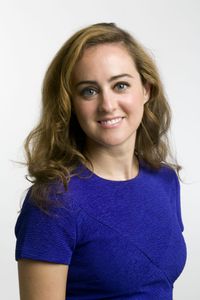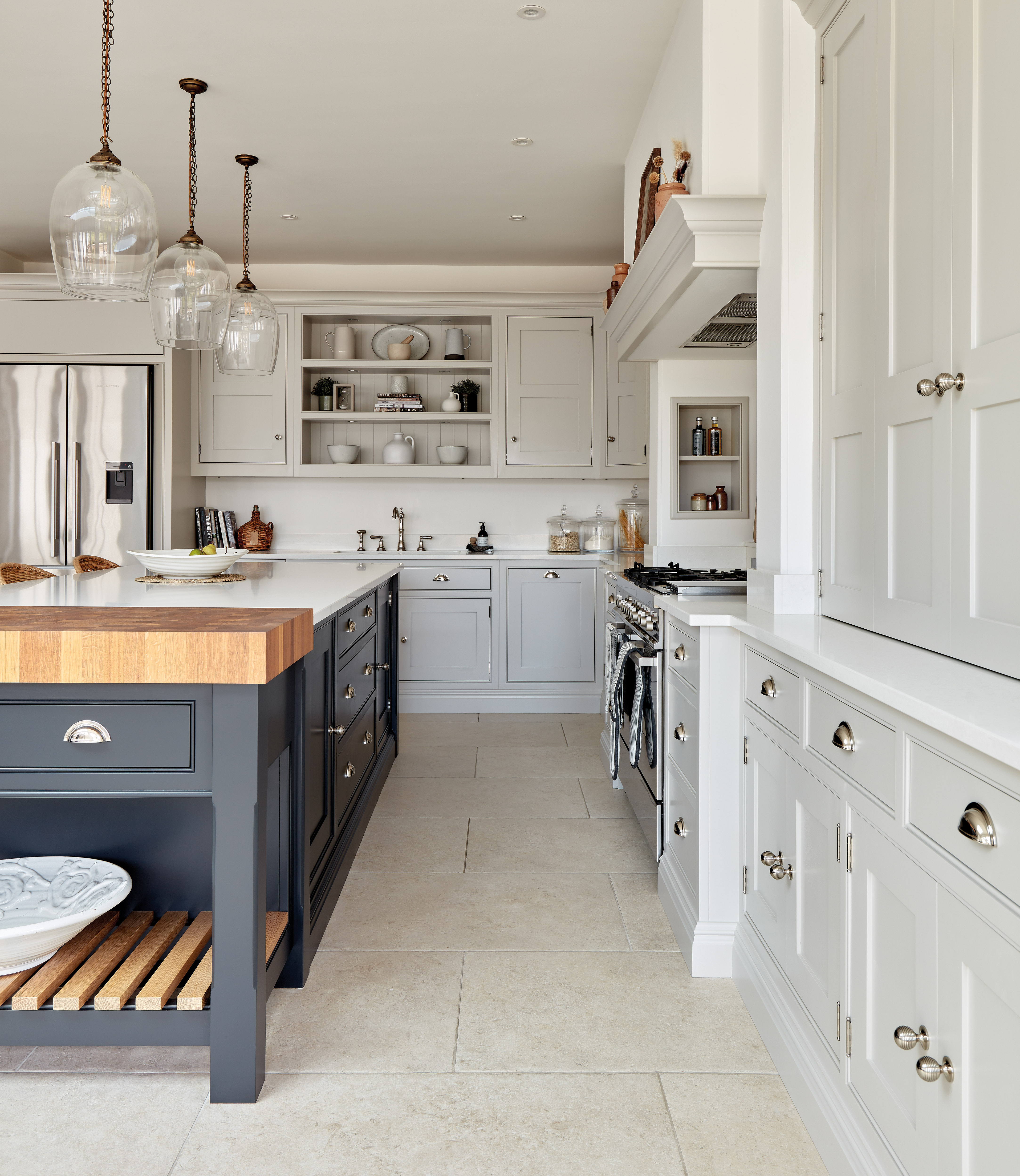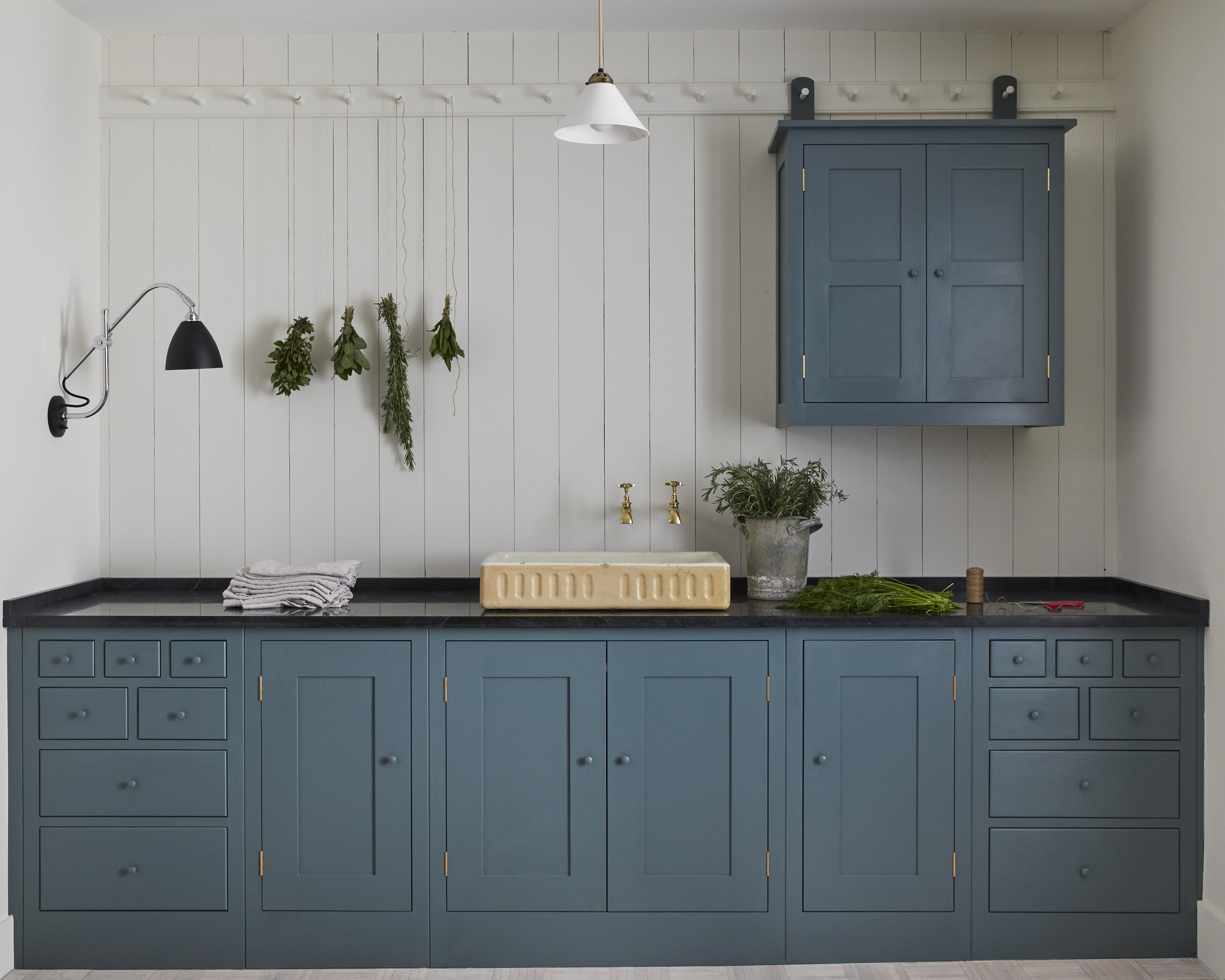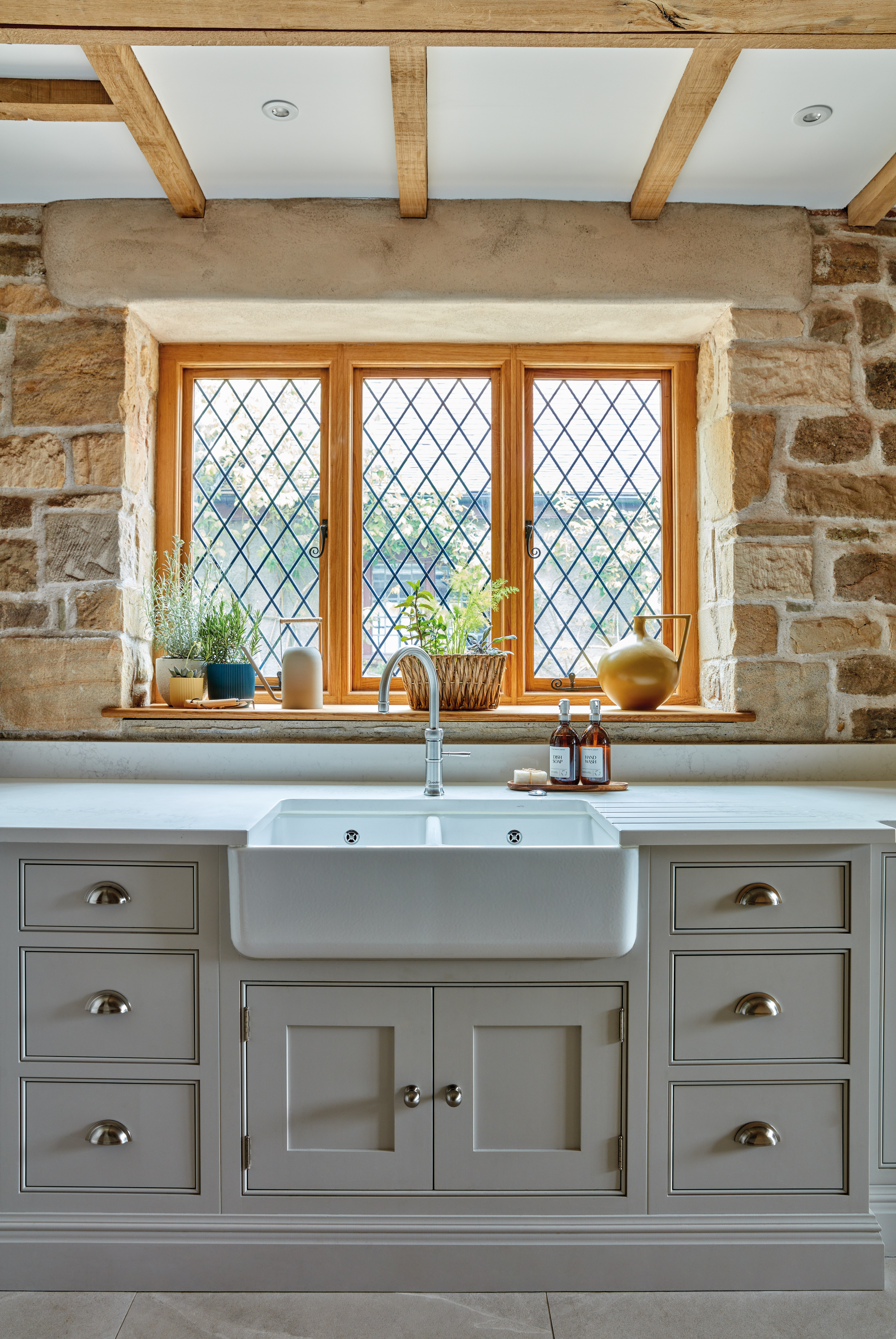Curious Questions: Where did the viral Instagram Shaker kitchen come from — and how is it linked to Quakerism?
The traditional and incredibly versatile Shaker kitchen is looked up to the world over, but where did it actually come from?


A Shaker kitchen’ is the ultimate in interior aspiration — seen inside the most admired and luxurious homes, from London to Los Angeles. They are fetishised on Instagram — the hashtag #shakerkitchen has more than 177,000 posts — and fitting one costs tens of thousands of pounds.
So it may come as a surprise to learn that this elegant style’s origins lie in the Quaker religion.
The Shaker kitchen’s core elements include cabinets crafted from wood, and solid, symmetrical doors consisting of a flat, recessed central panel surrounded by a raised frame with square edges. Aside from this frame, there is little to no other embellishment.

Tom Howley kitchens start from £25,000.
Honesty, simplicity and utility were the fundamental guiding principles of the Shaker movement — an offshoot of Quakerism that can trace its roots back to 1747 Manchester. Members called themselves the United Society of Believers in Christ’s Second Appearing. Their nickname — or moniker — was ‘Quaking Shakers, later abbreviated to ‘Shakers’ because of the energetic shaking and trembling of their heads and bodies during worship.
One of their leaders was a woman called Ann Lee — a blacksmith’s daughter and mill hand — who endured an unhappy arranged marriage to another blacksmith and lost all four of her children in infancy. After escaping the partnership, she began to have divine visions. Shakers were, unsurprisingly, persecuted in England — and one of Lee’s visions directed her to establish a church in America. She and eight followers arrived in New York City on August 6, 1774, and settled near Albany, New York, two years later. In the ensuing decades, the group gained many converts and other settlements sprung up from Maine to Kentucky. At their peak, in the mid-19th century, the movement counted more than 6,000 members, spread across 18 rural communities — away from the perceived sin and corrupting influence of the cities — among their numbers. The largest and most influential Shaker group was to be found in New Lebanon, New York, and remained active until 1947.

Plain English's Williamsburg kitchen from its New York showroom. The company favours American timbers such as maple and cherry wood for the drawers and cupboard interiors.
Shakers were utopians who practised communal living and shared ownership; like the Quakers, they were pacifists and believed in racial and sexual equality. This made it an attractive movement for women, according to Merlin Wright, design director at Plain English, desperately trying to escape the constraints of a patriarchal society.
Communities were largely self-sufficient and, in their attempt to separate themselves from the outside world and create a haven on earth, they grew their own food, made their clothes and furnishings and built their own tools, homes and furniture. A strict set of rules governed their dress, behaviour and domestic environment — all of which had to be simple and useful.
Exquisite houses, the beauty of Nature, and how to get the most from your life, straight to your inbox.

Tom Howley's Hartford collection in Tansy and oak.
‘Shakers believed that household objects should have a purpose and be made to last, denouncing decoration as unnecessary and dishonest,’ explains Tom Howley, creative design director at his eponymous kitchen company. ‘Shaker cabinetry was never about ornamentation — it was about purposeful design and enduring craftsmanship.' Indeed, to Shakers, the quality of the work they made was a testament to their devotion to God. 'Craftsmen were highly skilled and believed everything they made should look good from every angle — even parts that probably wouldn’t be seen,’ Howley adds. ‘This meant Shaker cabinets were as beautifully made on the inside as on the outside, with a smooth, unfussy finish.’ Pieces were made of American woods — such as pine, maple and cherry — and were usually painted or stained; colours were strictly regulated according to Shaker rules — blues, greens, reds and yellows the most popular.
To help support their communities, Shakers started selling goods to non-sect members and, by the 1860s, chairmaking was a key New Lebanon community industry and source of income. The wider world soon came to admire this simple yet expertly-crafted furniture and, as the Shakers declined, examples of their handiwork gained status as desirable collectors’ items. In late 1983, the Shaker expert Professor John Kassay sent former President Jimmy Carter a copy of his influential tome The Book of Shaker Furniture. At the bottom of his typed thank you letter, Carter handwrote: ‘I've long admired the beautiful simplicity of Shaker furniture and have made several of their pieces myself. Merry Christmas. JC.’
Today, only one active Shaker community remains — at Sabbathday Lake in Maine. However, the group has left an enduring legacy on kitchen design, both in America and across the wider world. ‘“Beauty rests on utility” was a key Shaker principle and that approach remains the signature of quality shaker kitchens today,’ says Fred Horlock, design director at Neptune. ‘Cabinetry embodies not just the Shaker aesthetic but their values, from the choice of honest materials to the skilled carpentry and the simple, but exacting lines.’
Alexandra Goss is an award-winning journalist who specialises in lifestyle and property features, notably for The Times and The Sunday Times, The Financial Times, The Telegraph, The London Magazine and Spear’s Magazine.
